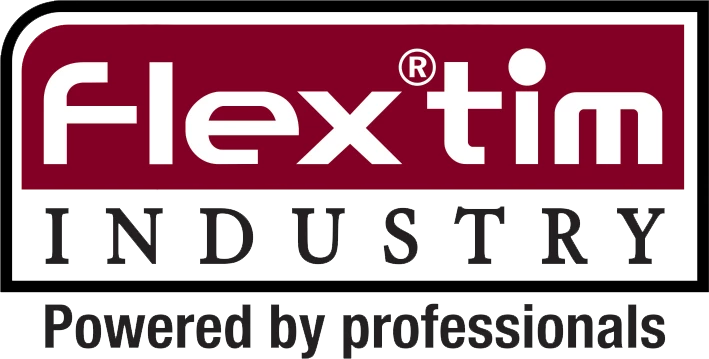THE RISKS OF TRANSMISSION OF PATHOGENS BETWEEN FARMS BY MEANS OF VEHICLES
Vehicles such as trucks, used in agricultural and livestock operations, play a crucial role in modern farming. However, these vehicles also present significant risks as vectors for the transmission of pathogens between farms. Pathogens can easily hitch a ride on the chassis and wheels of vehicles, facilitating the spread of diseases among different locations. This is particularly concerning in situations such as animal transport, waste transport, and agricultural transport.
For instance, when animals are transported from one farm to another, any contamination on the vehicle can introduce pathogens into a new environment. Similarly, trucks used for transporting waste or agricultural products can carry harmful microorganisms from one site to another, jeopardizing the biosecurity of farms. The movement of soil and organic matter on vehicle wheels and chassis further exacerbates this issue, creating a pressing need for effective sanitation measures.
EXAMPLES OF DISEASES TRANSMITTED DURING THE TRANSIT OF FARMS BY TRUCKS
Numerous diseases can be transmitted during the transit of farms by trucks, posing severe threats to both animal and human health. Two prominent examples are African swine fever and bird flu.
African swine fever (ASF) is a highly contagious viral disease affecting domestic and wild pigs. It is characterized by high fever, loss of appetite, hemorrhages in the skin and internal organs, and often results in death. The virus can survive for long periods in various environments, making contaminated vehicles a significant risk factor for its spread.
Bird flu, or avian influenza, is another highly contagious viral infection that affects birds, with some strains capable of infecting humans and other animals. The virus can be carried on the feathers, feces, and respiratory secretions of infected birds, and can easily contaminate vehicles used in poultry transport.
EXISTING SOLUTIONS FOR WASHING AND DISINFECTING VEHICLES
To mitigate the risks associated with pathogen transmission via vehicles, several solutions have been developed for washing and disinfecting vehicles. These include:
- Disinfection filter pool: This is used to remove pathogens from wheels, when the vehicle is passing through a concrete pool filled with disinfectant, ensuring a cleaner environment.
- Disinfection mat: placed at vehicle entry and exit points, these mats are soaked with disinfectant to sanitize wheels.
- Mobile disinfection trolley: a portable unit that can be used to spray disinfectant on vehicles, offering flexibility and ease of use.
- Mobile or stationary pressure washer: high-pressure washers effectively remove dirt and contaminants from vehicle surfaces.
- Disinfection gates for all-around disinfection and/or high-pressure cleaning: these gates create a disinfection mist around the vehicle, wash wheels and chassis, ensuring comprehensive sanitation.
AUTOMATIC GATES FOR TRUCK DISINFECTION - Advantages
Automatic disinfection gates offer numerous advantages, making them an essential component of modern farm biosecurity protocols.
Automatic dosing of disinfectant
Automatic gates are equipped with systems that ensure the correct dosage of disinfectant is applied. This eliminates human error, high consumption and ensures consistent and effective disinfection.
Automatic water feeding
These gates have integrated water supply systems that ensure continuous operation without the need for manual intervention, enhancing efficiency and reliability.
Corrosion resistant pumps
The use of corrosion-resistant pumps ensures longevity and durability of the disinfection systems, even when using aggressive disinfectant solutions.
Vehicle entry/exit sensors and timer
Equipped with sensors and timers, these gates can detect when a vehicle enters or exits, automatically activating the disinfection process. This ensures no vehicle bypasses the sanitation process.
Stationary or mobile disinfection gates
Flextim Industry offers both stationary and mobile disinfection gates, catering to different operational needs. Mobile gates provide flexibility for temporary setups or multiple locations, while stationary gates are ideal for permanent installations.
PROFESSIONAL EQUIPMENT FOR WASHING WHEELS AND CHASSIS – Advantages
Specialized installations for washing the wheels and chassis of vehicles provide a deeper level of cleanliness, essential for preventing pathogen spread.
Useful in activities generating coarse deposits
These installations are particularly useful in sectors such as agriculture, animal farms, construction sites, mining, where vehicles often accumulate heavy soil, droppings, and other coarse deposits.
Reduces dirt on public roads
By thoroughly cleaning the wheels and chassis, these installations help reduce the amount of dirt and contaminants spread on public roads, particularly in the entrance and exit areas of farms, construction sites etc.
Reduced water consumption
Flextim Industry provides systems designed to be water-efficient, recirculating water after using a flocculant that speeds up sedimentation. This ensures that water usage is minimized without compromising cleaning efficacy.
Sludge/Sediment deposits can be automatically evacuated
Automatic evacuation systems for sludge and sediment deposits enhance the convenience and efficiency of these installations, reducing the need for manual cleaning.
Enhanced effectiveness with vehicle disinfection gates
When used in conjunction with disinfection gates, pressure washing installations significantly enhance disinfection effectiveness. By removing dirt and deposits first, disinfectants can more effectively sanitize vehicle surfaces.
Entry/exit sensors
These installations are equipped with sensors that detect vehicle movement, automating the cleaning process and ensuring that no vehicle bypasses the wash station without a proper wheels and chassis washing.
Dimensions adapted for various vehicle
The installations can be customized to accommodate different vehicles length, width and height (e.g. trucks, agricultural tractors etc.), ensuring effective cleaning regardless of the type of vehicle being used.
CONCLUSION
The prevention of pathogen transmission between farms is a critical aspect of modern agriculture. Vehicles used in farming operations, due to their mobility and exposure to various environments, pose significant risks for spreading diseases.
Implementing robust washing and disinfection protocols is essential to mitigate these risks. Flextim Industry's range of equipment, including automatic disinfection gates and specialized washing installations for wheels and chassis, provides effective and efficient solutions for maintaining biosecurity in agricultural operations.
By integrating these modern technologies, farms can significantly reduce the risk of disease outbreaks, protect animal health, automate work, ensure the safety of their operations.





